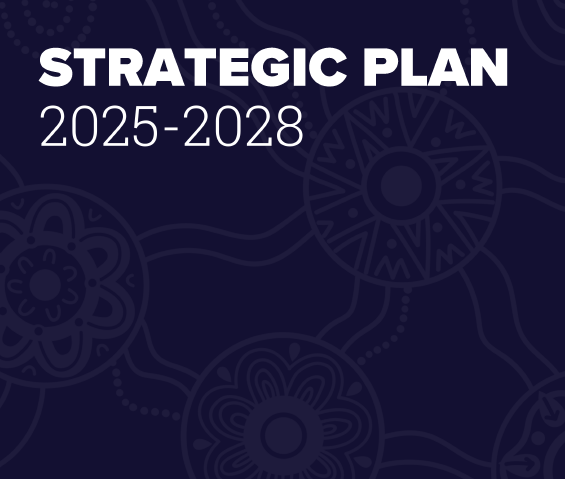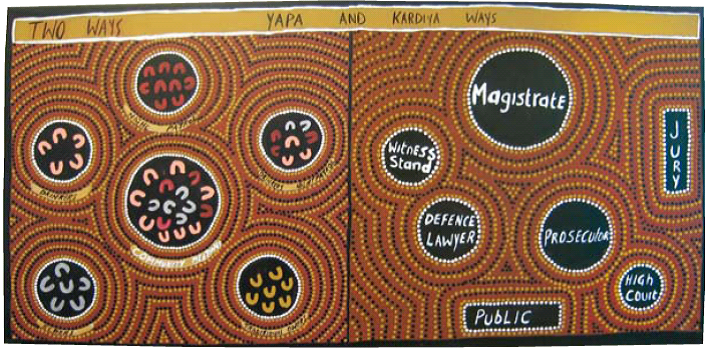Celebrating a Trans-Tasman Partnership: Māori and Australian First Nations Governance Leaders Unite...
This painting titled ‘Two Ways: Yapa and Kardiya Ways’ is reproduced with the kind permission of the artists, Gwen Brown and Marjorie Hayes, members of the Kurduju Committee from Ali Curung in the Northern Territory.
This painting depicts the Aboriginal dispute-resolution process at Ali Curung. The left side is Yapa (Aboriginal) way and it shows community organisations arching over a large central circle, which represents an open community meeting. The two groups below this circle represent elders and traditional owners. These two groups act as adjudicators and provide legitimacy to the decision-making process. The right side is the Kardiya (non-Aboriginal) criminal justice process where there is a judge, secretary, jury, prosecutor, defence lawyer, the troublemaker in the witness stand and members of the public.
The goal is that Aboriginal dispute resolution as practiced in this community becomes a process that:
- is worked out by the community
- is controlled by the community
- is responsible to the community
- can incorporate the acceptable laws, traditional and contemporary structures of the community
- has a capacity to work across both cultures.









.png)





